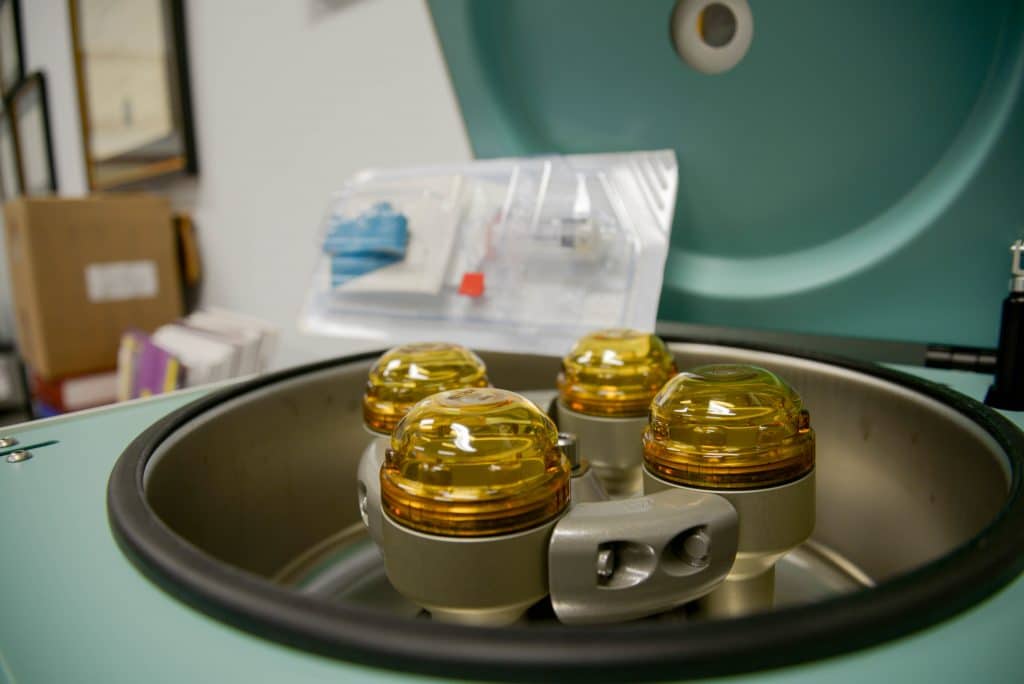PRP-Platelet Rich Plasma: A Smart Treatment for Sports-Related Ankle Sprains

Ankle sprains are one of the most common injuries in sports and also in normal life. Normally, there are treated with time, basic ligament care techniques and sometimes physical therapy. Most sprains will heal without surgery over time.
What Causes An Ankle Sprain?
A sprain is either a stretch, tear or complete rupture of the normal stabilizing ligaments of the ankle. Most ankle sprains occur on the outside of the ankle and are due to an inversion force. An inversion occurs when the foot turns such that the sole of the foot is visible and the outside of the foot touches the floor/turf.
The body will heal the sprain with time. The human body is capable of healing tissue through a highly regulated and staged process.
The first stage of healing is called the inflammatory stage – This is when an injury is swollen, hot and sometimes the skin becomes red in color. At this time, the body forms a blood clot between the two pieces of torn ligament. The clot needs to stabilize and become still; then it can convert to fibrin or fibrous tissue.
Later, tissue from the clot remodels into the normal tissue that is present at the tear. In the case of the ankle sprain, the anterior talofibular or calcaneofibular ligament will heal with normal, but thickened, ligamentous tissues.
Healing: The Route You Choose Impacts Recovery Time
During healing, it is important that the ankle has external stability provided. Without proper bracing or taping, the initial clot that is formed to heal the ligament will become disrupted and then the body must start the process at the beginning again.
In addition, physical therapy should be started almost immediately. The studies available have shown that people, especially athletes, that have early therapy for ankle sprains have better long-term outcomes. The ankle is stronger and less likely to re-sprain with proper rehabilitation.
Physical therapy is important for basic care such as swelling control, massage and pain relief. However, it is equally important to retrain the ankle with proper strength, flexibility, and balance (muscular control). It is important that the physical therapist understand the sport and the athlete’s role. Each sport and position has unique physical requirements.
Compression sleeves for the ankle and calf are also very helpful during recovery. Compression sleeves not only control swelling but in theory encapsulate the muscles and make them more efficient. Compression sleeves may be utilized under a medical grade ankle brace as well.
PRP Can Be The Fastest Way to Recovery
One great option to speed up the healing and recovery of an ankle sprain in the athlete is to use platelet-rich plasma (PRP). PRP injections provide an accelerant to natural healing. Essentially, PRP speeds up the entire process described above.
For an athlete at a level such as LSU football, the speed of recovery is paramount. PRP can take the normal 6-week recovery period for a torn ligament from an ankle sprain and compress that to 2-3 weeks.
PRP provides all of the components of healing that the body utilizes during the rebuilding process but in higher concentrations. In addition, PRP is placed directly into and/or around the target tissue. This provides a very accurate and highly concentrated injection of healing substances for the sprain.
By injecting PRP for the treatment of an ankle sprain, it is possible to aid an athlete in healing much more quickly and stronger. The PRP should be done in conjunction with the normal treatments of bracing, taping, compression and therapy.
PRP at Warner Orthopedics and Wellness
At our clinic, the goal of regenerative medicine techniques for tissue healing is to develop an excellent extracellular matrix to obtain better healing and mechanical performance of degenerative and/or injured tissues.
Platelet-rich-plasma (PRP) achieves this goal by reducing cell death signaling, increasing extracellular matrix formation/deposition and reducing joint inflammation. PRP is currently permitted for use in professional athletes; previously it was banned due to the systemic increase in growth hormone levels associated with injections of PRP into muscle tissue. It is currently thought that PRP injections do not confer performance enhancement upon the recipient.
- PRP is Minimally invasive ( a simple blood draw and subsequent injection)
- PRP is safe – it is an autologous transfer of tissue (blood product) with minimal risk of infection
Process
Extraction By Needle
To begin the process, blood is drawn from the patient using a butterfly needle. About 30 milliliters of the patient’s blood is extracted.
Separated Via Centrifuge
The blood is then placed in a centrifuge to begin the separation process. On some occasion, the blood is mixed with an anticoagulant.
Timing and Clotting
Clotting leads to the activation of the platelets. The anticoagulant can be used to prevent premature activation. However, if the PRP is going to be used within 30 minutes of the blood draw anti-clotting agents are unnecessary. The plasma, platelet layer, and red blood cell layer are separated by centrifugal force.
Extracting Platelets
After centrifuge, a platelet layer forms at the top of the vial. A special syringe is used to extract that layer only. The fluid is then activated with a clotting factor or injected into the desired location immediately.
Why it works
PRP Therapy uses one of the body’s most effective healing devices to improve and speed up recovery. Platelets are found naturally throughout the body in the blood and are used to treat all injuries, ranging from minor to major. PRP therapy works because it uses one of the most essential parts of the body’s healing process in a high concentration to improve healing and make injuries recovery faster, better and safer.

Call 225-263-1296
To Schedule Your Appointment





